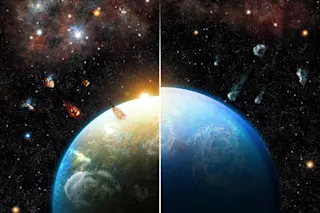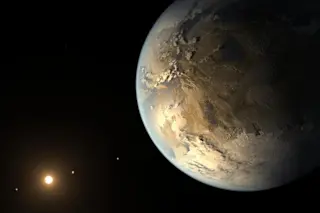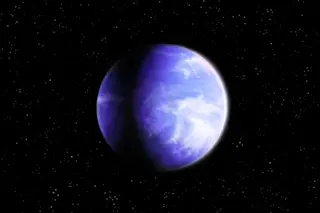Planets that form in regions with high levels of aluminum may be left with dry materials leading to Earth-like planets, while those in aluminum-light environments may stay wet and form ocean worlds. (Credit: Roger Thibaut) While we tend to think that Earth’s oceans make it a watery planet, it’s actually only a tiny fraction of a percent of water by mass. Looking out into the universe, it’s clear water is more common than our own planet implies. Some exoplanets can have half their mass as water. So, what causes some planetary systems to stay wet, while others dry out? The answer might be aluminum. Tim Lichtenberg is the lead author of a new study published Feb. 11, in Nature Astronomy. He says that large amounts of Al-26, a radioactive form of aluminum, can heat up and dry out the large boulders, some 5 to 50 miles across (called planetesimals), that ...
A Radioactive Metal May Be Vital For Building Water Worlds
Learn how aluminum heating effects shape the formation of Earth-like planets and ocean worlds in different planetary environments.
More on Discover
Stay Curious
SubscribeTo The Magazine
Save up to 40% off the cover price when you subscribe to Discover magazine.
Subscribe













